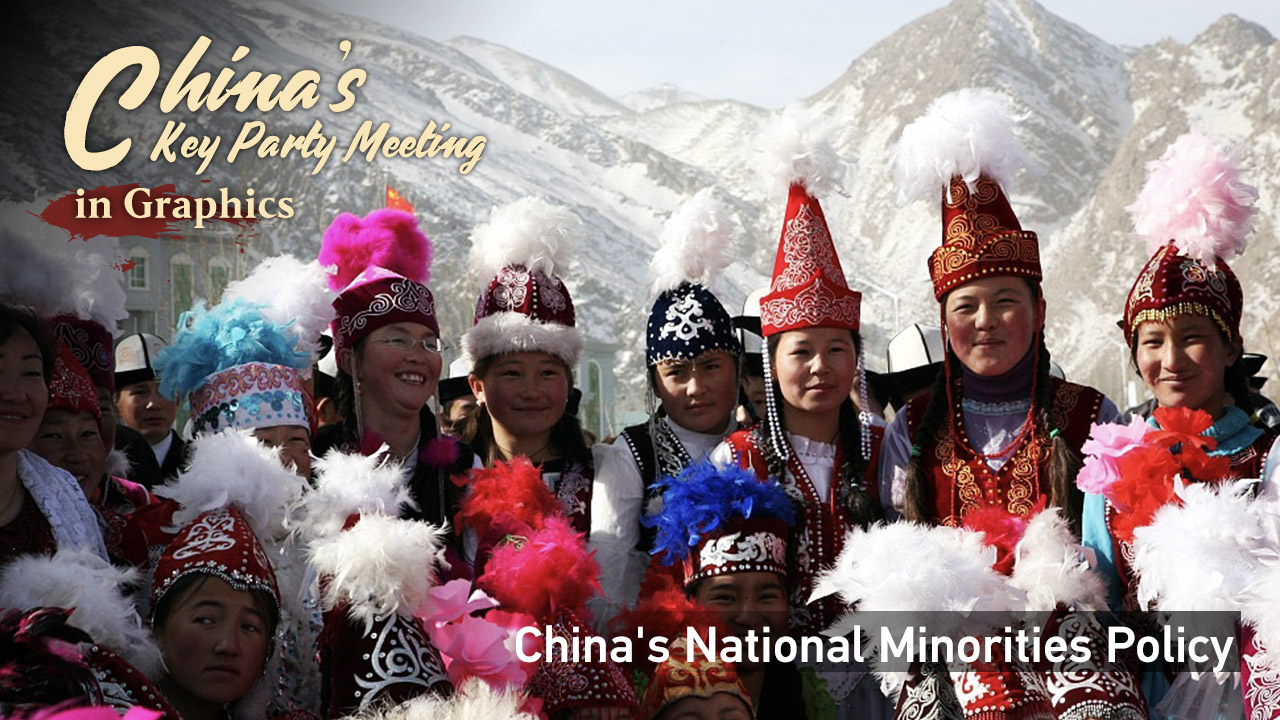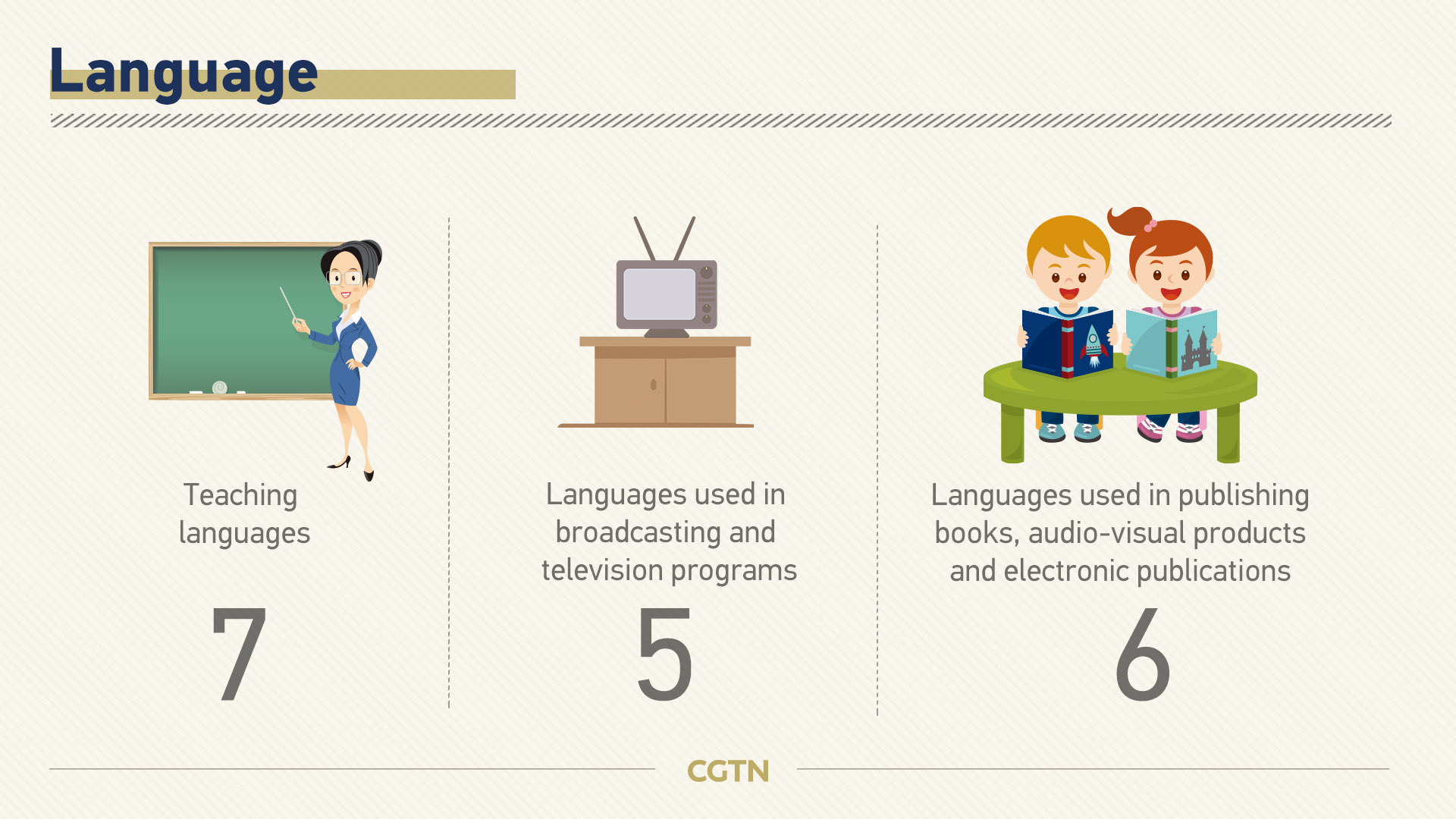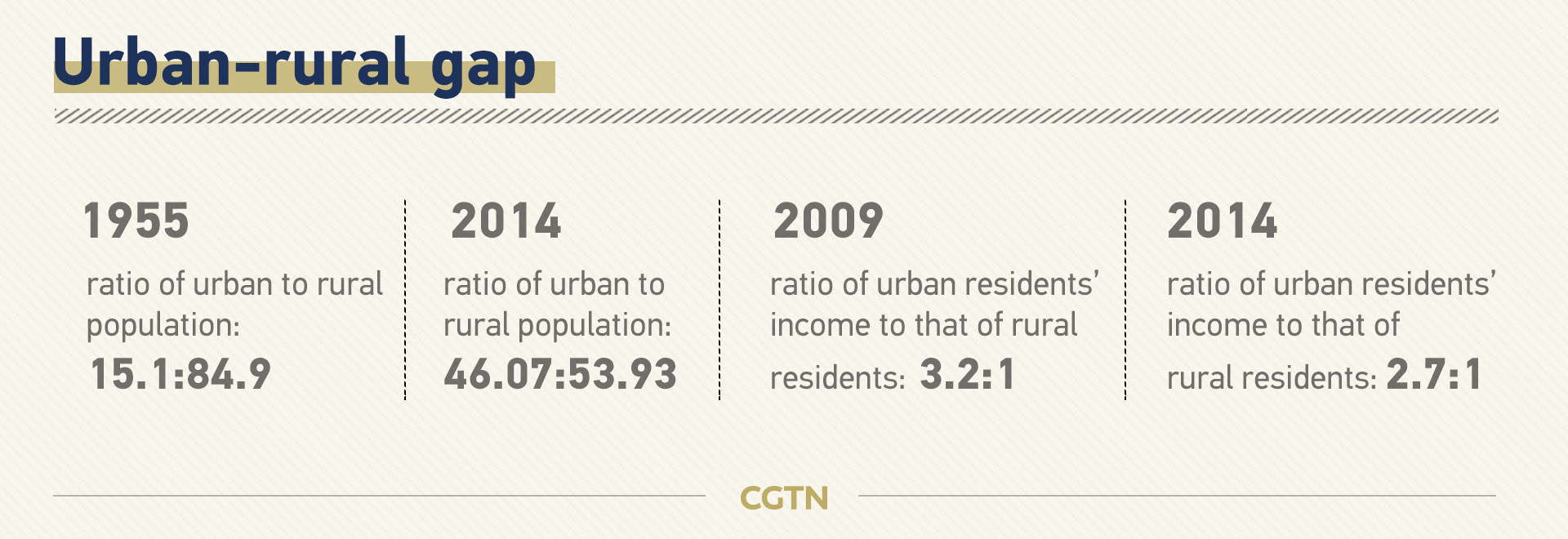
China has been a multi-ethnic country since ancient times. There are so far 56 ethnic groups identified and confirmed by the central government. In the country's far-western frontier, over a dozen ethnic groups maintain close relations and share weal and woe. They work hard to develop their home – Xinjiang, a shimmering land on the ancient Silk Road – into a region that seeks to retain its diverse, multicultural heritage while measuring up to the modernity of the inland.
Since the peaceful liberation of Xinjiang in 1949, and the founding of the Xinjiang Uygur Autonomous Region in 1955, it has seen continued improvement in people's well being, social stability and economic development.
Bilingual education
Xinjiang encourages ethnic minorities to study the standard spoken and written Chinese and offers appropriate courses in primary and secondary schools. It also encourages ethnic minorities to study one another's languages to enhance communication and mutual understanding.
Ethnic minority students have been offered bilingual courses since the 1950s. In 2014, a total of 269,400 Xinjiang students – from pre-school to high school – were receiving bilingual education, and the coverage of bilingual education in various forms reached 100 percent. From 2010 to 2014, the take up of two-year preschool bilingual education grew from 59 percent to 89 percent.
This is part of a wider move to protect the diversity of multiple spoken and written languages in Xinjiang. Among the 10 principal languages, seven are used in teaching in primary and secondary schools, five are used in broadcasting and television programs, and six are used in publishing books, audio-visual materials and electronic publications. Government organs in handling public affairs, and various other organizations in recruitment and promotion tests all use the language(s) of the ethnic groups exercising autonomy in a given area.

Protection of religion
Xinjiang is known for a range of different religions, including Islam, Buddhism, Christianity, Taoism and Eastern Orthodox Church, the coexistence and interaction of which have shaped the region as it is today.
Chinese people of all ethnic groups are guaranteed the right of freedom in religious belief. All normal religious activities held by the believers either in religious venues or at their homes in line with customary religious practices are protected by law, and no state organ, public organization or individual may interfere with such activities.
Xinjiang currently has 24,800 venues for religious activities, including mosques, churches, Buddhist temples and Taoist temples with 29,300 clerical practitioners, sufficient to meet the need of religious believers. In addition, the region has 112 religious organizations and eight religious colleges. In Xinjiang, 1,436 religious practitioners have been elected deputies to or members of people's congresses and the people's political consultative conferences at various levels. They actively participate in deliberations and management of administrative affairs on behalf of believers, and in exercising supervision over the government in respect to the implementation of the policy of freedom of religious belief.

The majority of Xinjiang's 10 major ethnic groups are followers of Islam, and there are 24,400 mosques with 28,600 clerical personnel across the region. Since the 1980s, the central government has allocated over 10 million yuan to maintaining or repairing a number of key religious sites listed under the protection at national or autonomous region level, including the Id Kah Mosque in Kashgar, Juma Mosque in Hotan, Yang Hang Mosque in Urumqi, and Emin Minaret in Turfan.
The Xinjiang Islamic Institute has trained 634 students since its founding in 1987, and since 2001 has held 132 training sessions for 28,665 clerical personnel. In accordance with standard international practices, the Chinese government has implemented a policy for planning and organizing pilgrimages. Since the 1980s, more than 50,000 people from Xinjiang have made pilgrimages to Mecca in Saudi Arabia.
Economic development
Over the past decades, Xinjiang's economy has achieved steady development, which has accelerated the region's modernization and social progress in all fronts.
Marked improvement has been observed in Xinjiang's overall strength. Its GDP surged from 791 million yuan in 1952 to 1.22 trillion yuan in 2018, with an annual growth rate of 8.3 percent. Its GDP per capita jumped to 49,000 yuan in 2018 from 166 yuan in 1952.
One of the most remarkable achievements is the narrowing divide between urban and rural areas. In the 1950s, Xinjiang had only few cities like Urumqi, Kashgar and Ghulja, and its rural areas remained a closed economy.

Decades of efforts have resulted in enormous improvements in the living conditions and productivity of both urban and rural residents. The ratio of urban to rural population was 15.1:84.9 in 1955. By 2014, the figure was 46.07:53.93. The ratio of urban residents' income to that of rural residents decreased from 3.2:1 in 2009 to 2.7:1 in 2014, narrower than that in the 11 other provinces and autonomous regions of western China, according to China's white paper titled "Historical Witness to Ethnic Equality, Unity and Development in Xinjiang."
As Xinjiang's new model of urbanization develops at a rapid pace, more and more rural residents are moving to the cities and enjoying a metropolitan life.
Graphics by Jia Jieqiong